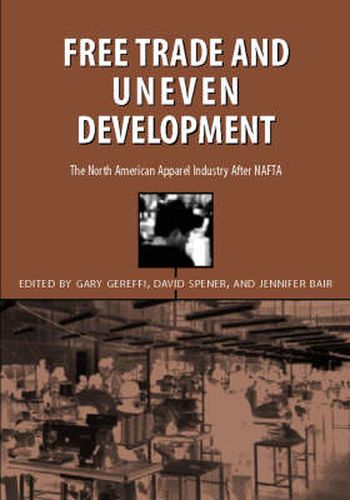Readings Newsletter
Become a Readings Member to make your shopping experience even easier.
Sign in or sign up for free!
You’re not far away from qualifying for FREE standard shipping within Australia
You’ve qualified for FREE standard shipping within Australia
The cart is loading…






This volume addresses many of the complex issues raised by North American integration through the lens of one of the largest and most global industries in the region: textiles and apparel. In part, this is a story of winners and losers in the globalization process, especially if one focuses on jobs lost and jobs gained in different countries and communities within North America, defined here as: Canada, the United States, Mexico, Central America, and the Caribbean. However, it would be a mistake to view the industry solely in these zerosum terms. The North American apparel industry is an excellent illustration of larger trends in the global economy, in which regional divisions of labor appear to be one of the most stable and effective responses to globalization. The contributors to this volume are an international and interdisciplinary group of scholars who have all done detailed fieldwork at the firm and factory levels in one or more countries of North America. Taken together the essays offer theoretical and methodological innovations built around the intersection of the global commodity chains and industrial districts literatures, as well as innovative approaches to studying the impact of cross-national, interfirm networks in terms of production and trade issues, and local development outcomes for workers and communities.
$9.00 standard shipping within Australia
FREE standard shipping within Australia for orders over $100.00
Express & International shipping calculated at checkout
This volume addresses many of the complex issues raised by North American integration through the lens of one of the largest and most global industries in the region: textiles and apparel. In part, this is a story of winners and losers in the globalization process, especially if one focuses on jobs lost and jobs gained in different countries and communities within North America, defined here as: Canada, the United States, Mexico, Central America, and the Caribbean. However, it would be a mistake to view the industry solely in these zerosum terms. The North American apparel industry is an excellent illustration of larger trends in the global economy, in which regional divisions of labor appear to be one of the most stable and effective responses to globalization. The contributors to this volume are an international and interdisciplinary group of scholars who have all done detailed fieldwork at the firm and factory levels in one or more countries of North America. Taken together the essays offer theoretical and methodological innovations built around the intersection of the global commodity chains and industrial districts literatures, as well as innovative approaches to studying the impact of cross-national, interfirm networks in terms of production and trade issues, and local development outcomes for workers and communities.